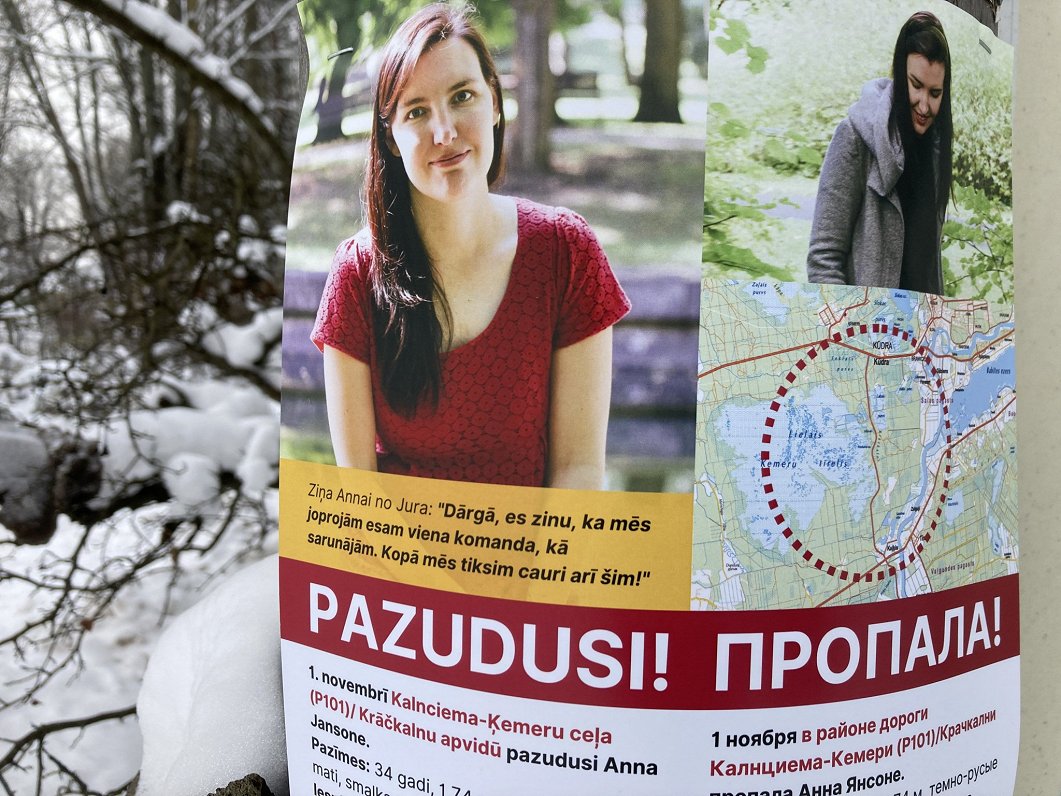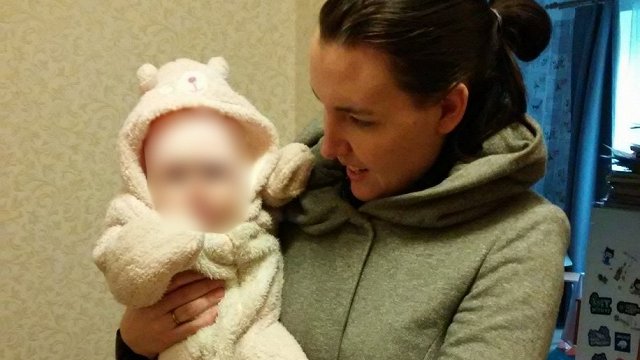So far this year, 151 people have gone missing and still haven't been found. A few of the more public cases are outlined below:
Kristers Dzintars, missing since December 7, 2022, from Zaķusala, Rīga.
The young man born in 2000 left his workplace at Latvian Television on the morning of December 7, 2022, and has not been seen since. He was last seen in the tunnel of Salu Bridge right after leaving the nearby LTV building.
#policijameklē bezvēsts pazudušo Kristeru Dzintaru (2000. g.), kurš šodien, 7. decembrī, plkst. 9.30 aizgāja no savas darba vietas Rīgā, Zaķusalas krastmalā. Ģērbies tumši zaļā ziemas jakā, tumšās biksēs, botēs, cepurē. Nēsā brilles. Ja zini Kristera atrašanās vietu, zvani - 110! pic.twitter.com/5WHJYa2etd
— Valsts policija (@Valsts_policija) December 7, 2022
Kristers' sister Kitija Dzintare told the broadcast that the family has decided to not comment publicly on the case anymore.
Helvijs Kursītis, missing since January 1, 2023, from Ķengarags, Rīga.
VP meklē bezvēsts prombūtnē esošo 2002.gadā dzimušo Helviju Kursīti, kurš 31.dec. iznāja no savas dzīvesvietas Rīgā, Maskavas ielā un līdz šim brīdim nav atgriezies.
— Valsts policija (@Valsts_policija) January 2, 2023
Ja zini viņa atrašanās vietu, zvani - 110!
Vairāk informācijas: https://t.co/bYs6CBbY3E#policijameklē pic.twitter.com/sEmdLAUvQo
Twenty-year-old Helvijs Kursītis last contacted his mother on January 1, 2023, at 2:11 at night. Helvijs' mother is unable to speak about the case both for emotional reasons and due to the interests of the investigation.
Anna Jansone, missing since November 1, 2023, from Valgunde parish, Great Ķemeri bog vicinity.

Anna Jansone's fate is also still unknown. She went missing with an infant, who was found dead the following day in a rental car in a forest. The baby was reported to have died from infant sudden death syndrome.
Lauris Zaube, missing since January 1, 2024, from Straupciems
#policijameklē Lauri Zaubi (2001.g.), kurš pēdējo reizi redzēts 1. janvārī ap plkst. 02.00 viesu namā ''Pēterstraupes'', Straupciemā, Salas pagastā. Augums 195 cm.
— Valsts policija (@Valsts_policija) January 2, 2024
Aicinām ikvienu, kura rīcībā ir informācija par viņa atrašanās vietu, zvanīt 67086678 vai 110. [1/2] pic.twitter.com/1SSX8u3LDz
22-year-old Lauris Zaube went missing during New Year's celebration from the guesthouse Pēterstraupes in Straupciems, Sala parish.
Jānis Tipuks, missing since January 12, 2024, from Skulte, Mārupe municipality.
#policijameklē bezvēsts pazudušo Jāni Tipuku, kurš 12.janvārī ap pulksten 12.00 izgāja no savas dzīvesvietas Skultes ielā, Skultē, Mārupes novadā un līdz šim brīdim nav zināma viņa atrašanās vieta.
— Valsts policija (@Valsts_policija) January 12, 2024
Aicinām atsaukties ikvienu, kurš zina viņa atrašanās vietu, zvanot 110. pic.twitter.com/WCy5Q94TNT
Jānis left instructions on the organization of his funeral and left. He deleted his e-mail address, wiped his phone, and left a note for his wife that their daughter should be picked up from kindergarten.
The State Police (VP) say there are many vmissing people but only one investigator. This is why there is often a lack of communication that victims report.
The head of Unit 1 of the VP's Organized Crime Serious and Serial Crime Prevention Administration, Romāns Jašins, said that it was only in movies that police officers, sitting in the precinct, connect to surveillance cameras and get information within five seconds, such as who the missing person met, what car they got into and in which direction they drove off. In reality, unfortunately, it is rare that such information is available.
“In reality, we have to drive ourselves, look at that route, look at where there are video cameras, where there are places that don't have cameras. If it's a holiday, and if we're talking about the private sector, reaching a person or getting a video during holidays is almost impossible. Then we have to wait two days or three days, depending on when the person disappeared. And there's no guarantee whether we get those records because it depends on the memory capacity of the devices,” Jašins said.
He explained that police work on missing cases is divided into two parts – active and passive searches. Active search occurs when the approximate location or routes of a person are known. The search then involves dog units, volunteers, as well as helicopters and drones.
“Once all the measures have been taken and the result is negative – we don't find the person – then a passive search phase begins, when a person is wanted, they have been announced missing. They appear in databases and their DNA is in our databases, and in case a person is found later, then we can compare whether it is them or not,” Jašins noted.
The Civil Law provides that a person who has not been found can be pronounced dead by a court after a decade. But until this happens, the State Police emphasizes that a person is wanted, and any video, a photo of a missing person, is very important.
“Time is vital if we are talking about the active phase when we start looking for a person; unfortunately, time works against us. Every detail, every piece of video, can be useful. In principle, it can help find a person,” Jašins noted.


























